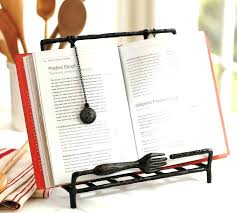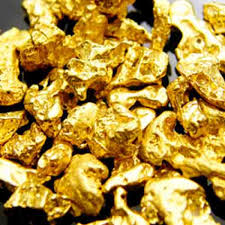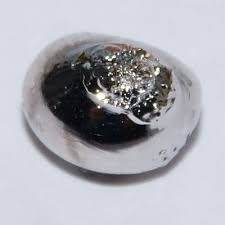What does Cooking & Precious Metal in Jewelry Have in Common?
Posted by on
When I first got into this business I thought there was gold, white gold, silver, and  platinum. Little did I know that turning precious metals into something useable for jewelry is like cooking from a recipe book! For example, they take a pinch of copper mixed with a cup of gold and come up with rose gold! Each recipe forms a new variation, along with a new value, appearance, luster, durability, as well as, trade-offs.
platinum. Little did I know that turning precious metals into something useable for jewelry is like cooking from a recipe book! For example, they take a pinch of copper mixed with a cup of gold and come up with rose gold! Each recipe forms a new variation, along with a new value, appearance, luster, durability, as well as, trade-offs.
There are only eight metals deemed precious: silver, gold, and the six metals of the platinum family (platinum, palladium, rhodium, ruthenium, iridium, and osmium). Though these are the official precious metals, non-precious metals can be mixed with the the precious metals to create new and appealing variations. Just like the recipe book analogy, low fat alternatives vs low carb, the metal recipes provide tradeoffs as well.
Below is a brief explanation to understand the recipes of precious metals and why our chefs blend various ingredients in the pursuit of the perfect product.
GOLD
Recent studies suggest that gold originated in the far reaches of the universe, billions of years ago. It arrived as dust on Earth in its infancy. Since the time gold was discovered, people have coveted the mineral and used it in many different ways. Gold has been used as a form of currency, a source for machinery, as well as, jewelry, status, and religious purposes.
 Gold, in its purest form, is too soft and would scratch or bend too easily to be used in jewelry. Most "Metal Chefs" blend the gold with silver or copper for a more resilient alloy. To explain the amount of gold used in the recipe, the term karat (abbreviated “k” or “kt”) is used to describe the percentage of pure gold in the alloy. Gold listed as 24 karats is considered pure gold. A newer alloy becoming popular on the jewelry scene consists of 99% gold and 1% titanium. This allows the alloy to retain nearly all its gold color while providing improved durability.
Gold, in its purest form, is too soft and would scratch or bend too easily to be used in jewelry. Most "Metal Chefs" blend the gold with silver or copper for a more resilient alloy. To explain the amount of gold used in the recipe, the term karat (abbreviated “k” or “kt”) is used to describe the percentage of pure gold in the alloy. Gold listed as 24 karats is considered pure gold. A newer alloy becoming popular on the jewelry scene consists of 99% gold and 1% titanium. This allows the alloy to retain nearly all its gold color while providing improved durability.
Solid Gold — “Solid gold” refers to an alloy that contains at least 10k of gold, and is not hollow. The mixture of gold to the other mixed metals determines the karat. The high the percentage of gold, the softer and more easily scratched and bent the item becomes.
24 Karat: 99.9% Pure
22 Karat: 91.7% Pure
18 Karat: 75% Pure
14 Karat: 58.3% Pure
12 Karat: 50% Pure
10 Karat: 41.7% Pur
White Gold — White gold is an alloy of gold and nickel, sometimes also containing palladium or zinc. These metals lend the gold a pale, platinum-like color (whereas copper and silver enhance gold’s natural golden hue).
Rose Gold — Rose gold is an alloy that combines gold with copper to create a golden metal with a reddish hue.
Gold-Filled — “Gold-filled” (also “gold overlay” or “rolled gold-plated”) also refers to items with a coating of 10k or greater gold, but in gold-filled jewelry the gold is mechanically bonded to the base metal in a more durable fashion than with simple gold plate.
Gold Vermeil — “Gold vermeil” (pronounced “vermay“) also refers to a coating of gold on the outside of another metal, but entails a much thicker layer (at least 100 micro inches). Gold vermeil is done over sterling silver, and the coating has a purity of at least 14k. Gold vermeil jewelry is much more durable than regular gold-plated jewelry.
Gold-Plated — Gold-plated items have been coated with gold of at least 10k. A base metal, such as brass, is dipped into a bath of electroplating solution, with a lump of solid gold. When an electric current is applied, a thin layer of gold is deposited on the metal. Since the plating is thin (usually about 7 to 20 micro inches), the plate on can come off with frequent wear.
Colored Gold - The color of gold changes when alloyed. For example, mixing copper with gold creates a darker yellow color. Adding nickel plus zinc, copper, platinum, or manganese produces white gold. Typically, white gold doesn’t contain silver, which softens gold and gives it a green tint. Other gold alloy colors include green, red, and blue.
| Gold Color | Alloys |
| White | 10% to 20% nickel, plus copper, tin, and sometimes platinum or manganese |
| Green | Silver, sometimes cadmium and zinc |
| Red or Pink | Copper |
| Yellow | Silver and copper |
| Blue | Iron |
SILVER
Know for Its luster, silver has been popular for thousands and thousands of  years. Its' versatility, luster, and rarity keeps it as a top precious metal used heavily in jewelry. Silver, like gold, is too soft in its pure state for jewelry and must be mixed with other metals to strengthen, prevent scratching, and distortion.
years. Its' versatility, luster, and rarity keeps it as a top precious metal used heavily in jewelry. Silver, like gold, is too soft in its pure state for jewelry and must be mixed with other metals to strengthen, prevent scratching, and distortion.
Silver purity is defined by the amount of silver vs other metals. There is not a karat rating for silver. Instead, silver is list by number and name.
Tibetan Silver - Tibetan silver and other alloys described as "tribal" silver are base metal alloys that have a silver appearance. Historically 'Tibetan Silver' did contain silver, and some old items may be predominately silver.
800 silver — Silver containing 80 percent silver and 20 percent copper or other metal.
Coin Silver vs Nickel Silver - Coin silver is .900 silver or 90% silver and 10% copper, whereas Nickel Silver is not silver at all!
925 sterling silver — Sterling silver contains at least 92.5 percent silver and no more than 7.6 percent copper or other metal.
Argentium Silver - Argentium silver is a brand of modern tarnish-resistant silver alloys, containing either 93.5% or 96% silver. Argentium alloys replace some of the copper in the traditional sterling silver alloy (92.5% silver + 7.5% copper) with the metalloid germanium.
950 sterling silver — 950 silver contains at least 95 percent silver and no more than 5 percent copper or other metal.
Fine silver — Fine silver contains 99.9 percent silver that is too soft to be used for most jewelry, but is sometimes applied in a thin coating over sterling silver to make it appear shinier.
PLATINUM
 Platinum is the most durable, lustrous, and scratch-resistant of the fine metals, but its scarcity makes it pricier than gold, the six metals in the platinum family are the finest of the precious metals. Platinum is a silver-white metal found worldwide, typically strengthened with other metals, such as iridium, osmium, or nickel, for use in jewelry. Like silver, platinum is not measured in karats, but rather is stamped with a standardized platinum quality mark by its manufacturer, indicating the percentage of platinum contained. For example, the marking 900 Platinum means that 900 parts out of 1000 are pure platinum, or in other words, the item is 90% platinum and 10% other metals. The abbreviations for platinum — Plat. or Pt. — also can be used in marking jewelry.
Platinum is the most durable, lustrous, and scratch-resistant of the fine metals, but its scarcity makes it pricier than gold, the six metals in the platinum family are the finest of the precious metals. Platinum is a silver-white metal found worldwide, typically strengthened with other metals, such as iridium, osmium, or nickel, for use in jewelry. Like silver, platinum is not measured in karats, but rather is stamped with a standardized platinum quality mark by its manufacturer, indicating the percentage of platinum contained. For example, the marking 900 Platinum means that 900 parts out of 1000 are pure platinum, or in other words, the item is 90% platinum and 10% other metals. The abbreviations for platinum — Plat. or Pt. — also can be used in marking jewelry.
RHODIUM
Rhodium is the most rare, and thereby, the most expensive precious metal. It is  very rare in nature and only found as a by-product of mining for other metals. While rhodium is both too expensive and too brittle to make jewelry out of, it makes an excellent plating material. It is often used to hide imperfections and lend a higher sheen to silver or white gold pieces. Being harder than both silver and gold, it also makes an excellent protective coat that shields jewelry from scratches. One of its greatest advantages is that it doesn’t tarnish and requires no particular cleaning procedures. Rhodium plating is also a good recommendation for customers who are allergic to silver, as it will protect them from direct contact.
very rare in nature and only found as a by-product of mining for other metals. While rhodium is both too expensive and too brittle to make jewelry out of, it makes an excellent plating material. It is often used to hide imperfections and lend a higher sheen to silver or white gold pieces. Being harder than both silver and gold, it also makes an excellent protective coat that shields jewelry from scratches. One of its greatest advantages is that it doesn’t tarnish and requires no particular cleaning procedures. Rhodium plating is also a good recommendation for customers who are allergic to silver, as it will protect them from direct contact.
Share this post
- 11 comments
- Tags: 2019, Blog, EthanAdeline, EthanAdelineJewelry, Jewelry, Metal Allergies, Platinum, Precious Metals, Rhodium, Silver, Style

ycliKwSZPrd
RsjYrNoI
KpzEyrCs
FWYDxRZtj
GwTjoAybs